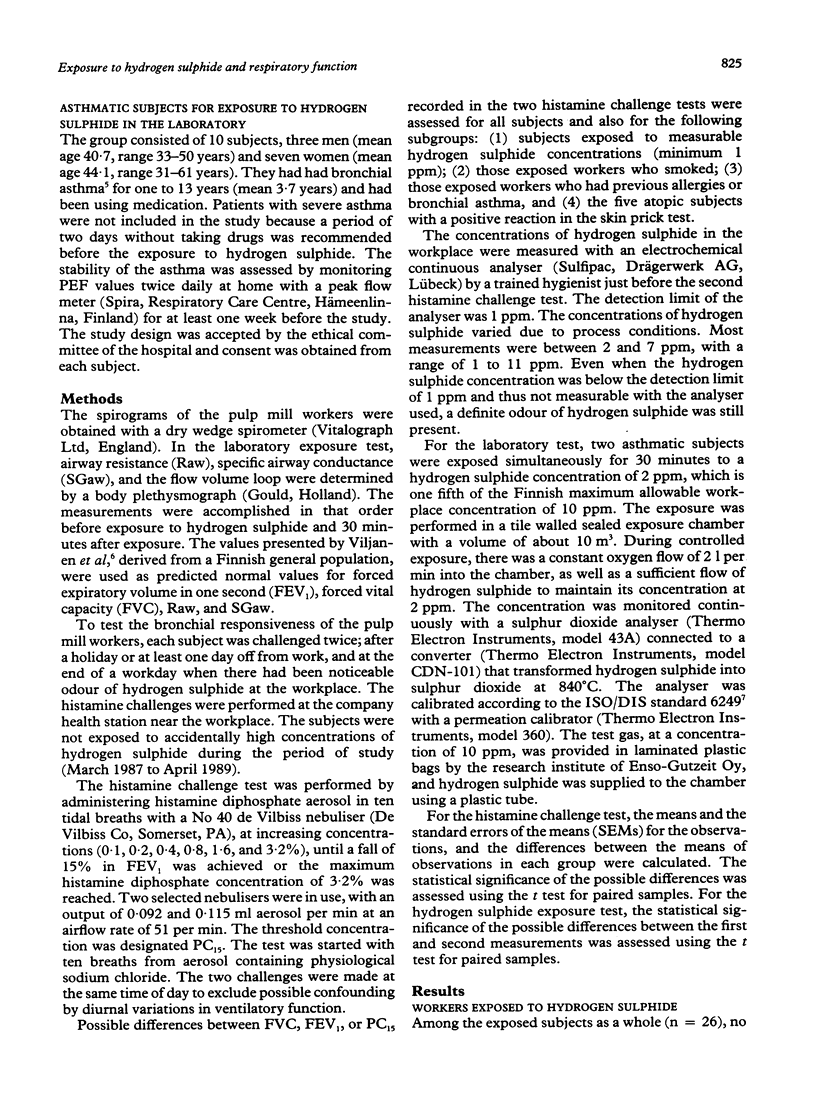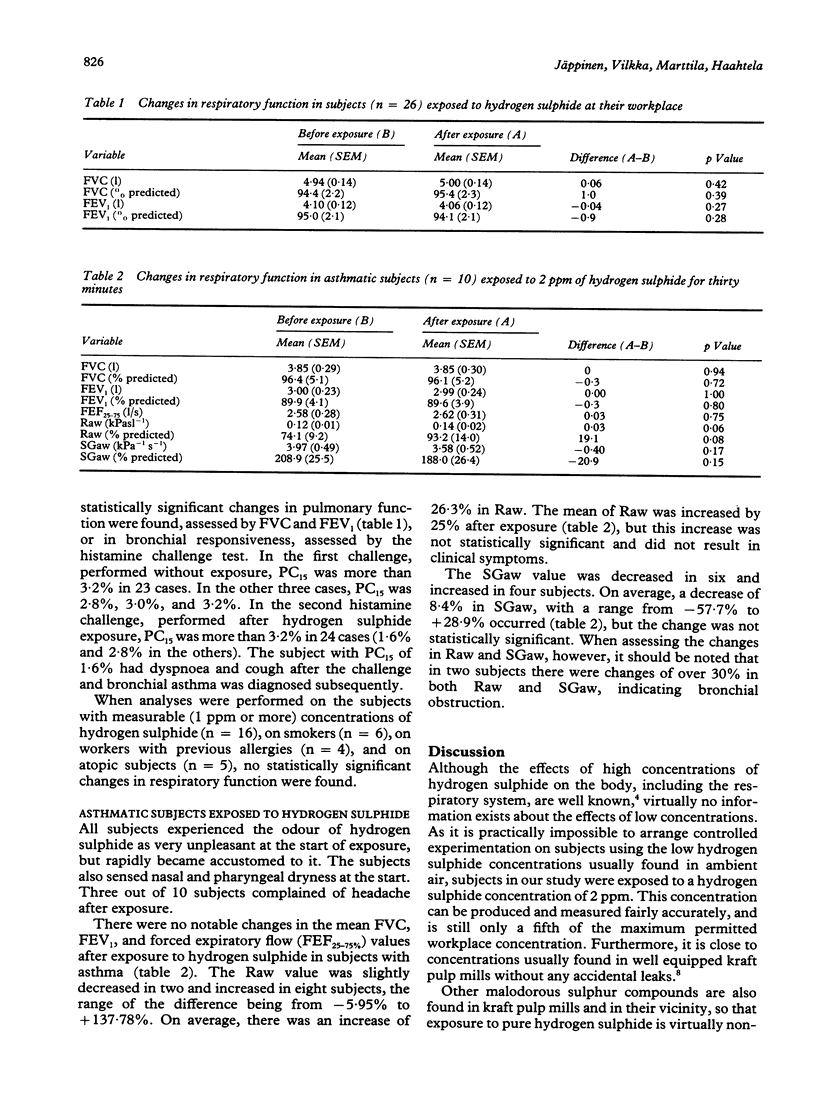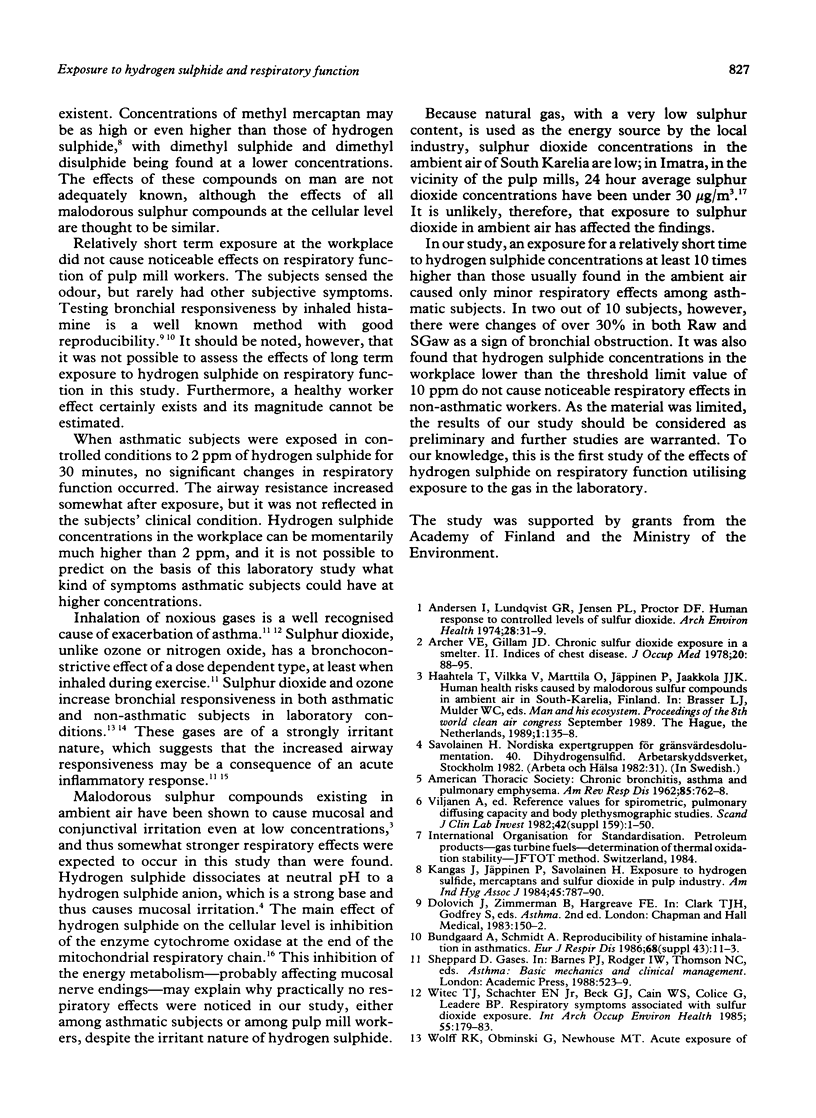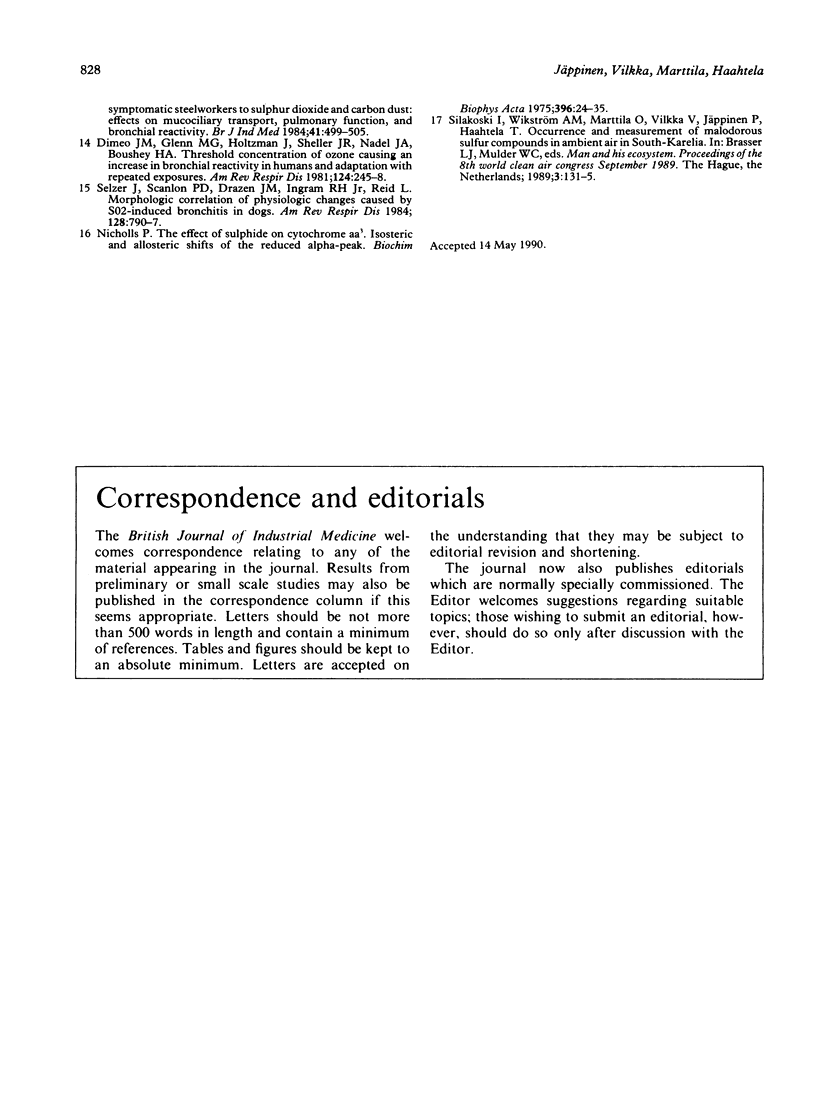Abstract
A study was carried out to assess possible effects of low concentrations of hydrogen sulphide on respiratory function. The cohort comprised 26 male pulp mill workers (mean age 40.3, range 22-60 years) with a daily exposure to hydrogen sulphide in the workplace, and 10 volunteers, who had asthma (three men, mean age 40.7, range 33 to 50 years, and seven women, mean age 44.1, range 31 to 61 years). The respiratory function of the pulp mill workers was monitored by measuring forced vital capacity (FVC), forced expiratory volume in one second (FEV1), and bronchial responsiveness after at least one day off work and at the end of a workday. Bronchial responsiveness was tested by challenge with histamine. The 10 asthmatic subjects were exposed in laboratory conditions to 2 ppm of hydrogen sulphide for 30 minutes in an exposure chamber. Airway resistance (Raw) and specific airway conductance (SGaw) were assessed by a body plethysmograph, and the ventilatory capacities were measured with a flow volume spirometer. No significant changes in respiratory function or bronchial responsiveness related to exposure to hydrogen sulphide in the pulp mill workers were found. In the asthmatic subjects, Raw was increased by 26.3% and SGaw was decreased by 8.4% on average after exposure to hydrogen sulphide. These changes were not statistically significant. In two subjects, however, changes were greater than 30% in both Raw and SGaw, indicating bronchial obstruction. It is concluded that exposure for a relatively short time to hydrogen sulphide concentrations appreciably higher than those existing in ambient air do not cause noticeable effects on respiratory function.
Full text
PDF




Selected References
These references are in PubMed. This may not be the complete list of references from this article.
- Andersen I. B., Lundqvist G. R., Jensen P. L., Proctor D. F. Human response to controlled levels of sulfur dioxide. Arch Environ Health. 1974 Jan;28(1):31–39. doi: 10.1080/00039896.1974.10666429. [DOI] [PubMed] [Google Scholar]
- Archer V. E., Gillam J. D. Chronic sulfur dioxide exposure in a smelter. II. Indices of chest disease. J Occup Med. 1978 Feb;20(2):88–95. doi: 10.1097/00043764-197802000-00008. [DOI] [PubMed] [Google Scholar]
- Bundgaard A., Schmidt A. Reproducibility of histamine inhalation in asthmatics. Eur J Respir Dis Suppl. 1986;143:11–13. [PubMed] [Google Scholar]
- Dimeo M. J., Glenn M. G., Holtzman M. J., Sheller J. R., Nadel J. A., Boushey H. A. Threshold concentration of ozone causing an increase in bronchial reactivity in humans and adaptation with repeated exposures. Am Rev Respir Dis. 1981 Sep;124(3):245–248. doi: 10.1164/arrd.1981.124.3.245. [DOI] [PubMed] [Google Scholar]
- Kangas J., Jäppinen P., Savolainen H. Exposure to hydrogen sulfide, mercaptans and sulfur dioxide in pulp industry. Am Ind Hyg Assoc J. 1984 Dec;45(12):787–790. doi: 10.1080/15298668491400647. [DOI] [PubMed] [Google Scholar]
- Nicholls P. The effect of sulphide on cytochrome aa3. Isosteric and allosteric shifts of the reduced alpha-peak. Biochim Biophys Acta. 1975 Jul 8;396(1):24–35. doi: 10.1016/0005-2728(75)90186-3. [DOI] [PubMed] [Google Scholar]
- Seltzer J., Scanlon P. D., Drazen J. M., Ingram R. H., Jr, Reid L. Morphologic correlation of physiologic changes caused by SO2-induced bronchitis in dogs. The role of inflammation. Am Rev Respir Dis. 1984 May;129(5):790–797. doi: 10.1164/arrd.1984.129.5.790. [DOI] [PubMed] [Google Scholar]
- Witek T. J., Jr, Schachter E. N., Beck G. J., Cain W. S., Colice G., Leaderer B. P. Respiratory symptoms associated with sulfur dioxide exposure. Int Arch Occup Environ Health. 1985;55(2):179–183. doi: 10.1007/BF00378381. [DOI] [PubMed] [Google Scholar]
- Wolff R. K., Obminski G., Newhouse M. T. Acute exposure of symptomatic steelworkers to sulphur dioxide and carbon dust: effects on mucociliary transport, pulmonary function, and bronchial reactivity. Br J Ind Med. 1984 Nov;41(4):499–505. doi: 10.1136/oem.41.4.499. [DOI] [PMC free article] [PubMed] [Google Scholar]


